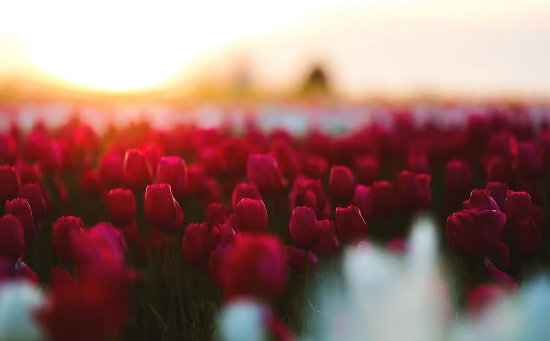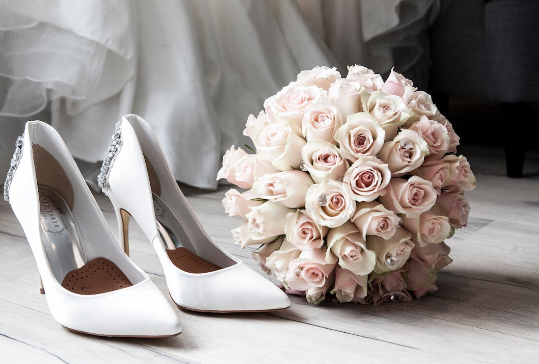Weddings are a beautiful amalgamation of traditions, emotions, and memorable moments. Flowers hold a unique place among the many elements that make a wedding special. They’re not just decorations; they embody the essence of the celebration – love, beauty, and growth. However, amidst skyrocketing expenses, more couples are embracing the trend of DIY wedding flowers. This guide will take you through creating your floral arrangements and infusing your special day with personal touches and memorable experiences.
Plan Your Floral Arrangements
Choosing Your Flowers
The first step in your DIY floral journey is selecting the right flowers. Consider factors like the wedding theme, color palette, and seasonality. Research flowers that are in season during your wedding to keep costs down and ensure freshness. Also, think about the longevity and sturdiness of the flowers; some might wilt faster than others. To dive deeper into crafting your floral vision, explore how to arrange your own custom floral vision, a resource that provides valuable insights and inspiration for your wedding flower arrangements.
Budgeting
Budgeting for DIY wedding flowers is critical in ensuring your floral dreams don’t become financial nightmares. It’s a common misconception that DIY always equates to cost savings. While it does provide more control over expenditures, careful planning, and budget allocation are essential. Consider the cost of flowers and additional supplies like floral foam, tape, wires, and decorative elements. Bulk purchasing from wholesalers can offer significant savings, but it’s important to balance quantity with quality.
Remember, buying in bulk means needing ample space for storage and preparation. Additionally, set aside a portion of your budget for unforeseen expenses; there are always last-minute items or emergencies that arise. By having a detailed and flexible budget, you can ensure your DIY flower arrangements are both beautiful and cost-effective.
Tools and Materials
The success of DIY wedding flowers greatly depends on having the right tools and materials. Start by listing everything you’ll need: sharp scissors for clean cuts, floral tape for stability, pins, and wires for intricate designs, floral foam for structure, vases or containers for displays, and ribbons or decorative elements for the finishing touches. It’s also wise to invest in a few extra supplies in case of mistakes or last-minute changes.
High-quality tools can make the difference between arrangements that look professionally done and those that don’t. Additionally, consider the workspace where you’ll be creating these floral pieces. Ensure it’s large enough to accommodate your designs and a comfortable environment for you and any helpers. Being well-prepared streamlines the process and significantly reduces stress in the days leading up to the wedding.
Learning Techniques
Before diving into the world of DIY wedding flowers, it’s crucial to educate yourself on various floral arrangement techniques. A wealth of resources is available online, including detailed tutorials, step-by-step guides, and video workshops. Additionally, many communities offer in-person classes where you can learn and practice under the guidance of professional florists. These classes can provide hands-on experience and insider tips that are difficult to gain from online resources alone. It’s important to practice these techniques well before your wedding day.
Try creating different types of arrangements like bouquets, centerpieces, and boutonnieres. This practice will improve your skills and give you a realistic idea of the time and effort required for each type of arrangement. Remember, the goal is to create beautiful flowers that reflect your style and add a personal touch to your wedding.
Designing Your Arrangements
Designing your wedding flower arrangements allows for a level of personalization that store-bought options can’t match. Start by considering the overall theme and color palette of your wedding. Are you aiming for a romantic, whimsical, or perhaps a more traditional look? Each style may dictate different types of flowers and arrangement styles. Bouquets for the bridal party, table centerpieces, aisle decorations, and boutonnieres serve unique purposes and require different design considerations.
Sketching out ideas or creating a mood board can be incredibly helpful. Collect images, fabric swatches, and color samples that inspire you. This visual representation can serve as a guide and source of inspiration as you select flowers and design your arrangements. Feel free to experiment with different flowers, textures, and colors to achieve the look that best represents your vision for the big day.
Enlisting Help
Building a Team
DIY wedding flowers offer a perfect opportunity to involve your loved ones in the wedding preparation process. Assembling a dedicated team can transform what might seem daunting into an enjoyable and memorable experience. Start by identifying friends and family members willing and excited to help. Consider their abilities and interests when assigning tasks. For example, someone with a creative eye can be in charge of design aspects, while those with a knack for organization can handle the logistics.
Remember to include a few people who are good at handling last-minute challenges. Organize a few meetings or workshops with your team before the big day. This not only ensures everyone is on the same page but also helps in building a cohesive workflow. Make these sessions fun and light-hearted, creating an atmosphere of celebration rather than work. Remember, the aim is to prepare beautiful floral arrangements and build stronger connections with those participating in your special day.
Time Management
Effective time management is the backbone of successful DIY wedding flower preparation. Start by creating a detailed timeline that outlines every step of the process, from purchasing to final arrangement. Factor in time for researching and ordering flowers, especially if you’re buying from wholesalers or online vendors. Some flowers may need to be ordered weeks or even months in advance. Allocate time to prepare the flowers once they arrive. This includes cleaning, cutting, and conditioning them to ensure they remain fresh and vibrant for the wedding.
Plan to assemble the more enduring arrangements, like boutonnieres and corsages, a day or two before the wedding. Leave delicate arrangements, like bridal bouquets, as soon as possible to maintain freshness. Ensure you have a clear schedule for the wedding day, accounting for transport and setup of the floral arrangements at the venue. By having a well-planned timeline, you can avoid last-minute rushes and ensure that the floral elements of your wedding are as stress-free and beautiful as possible.
Final Preparations and Execution
Storing Flowers
Learn how to store your flowers to keep them fresh properly. Most flowers require cool, dark environments. If space is an issue, consider renting a floral cooler.
Assembling Arrangements
Follow your designs and techniques to assemble the arrangements. Be flexible and creative; sometimes, flowers have their own ideas about how they want to sit!
Transporting and Setting Up
Plan how you’ll transport the flowers to the venue. Ensure they’re secure and protected during the journey. Once at the venue, set up the arrangements as planned.
Conclusion

Creating your wedding flowers can be a deeply personal and rewarding experience. It allows you to imprint your personality into one of the most significant days of your life. While it requires planning, creativity, and hard work, the result is a beautiful, intimate celebration adorned with your floral creations. Remember, the key to successful DIY wedding flowers is in the preparation – plan thoroughly, practice, and embrace the journey with joy and enthusiasm.







